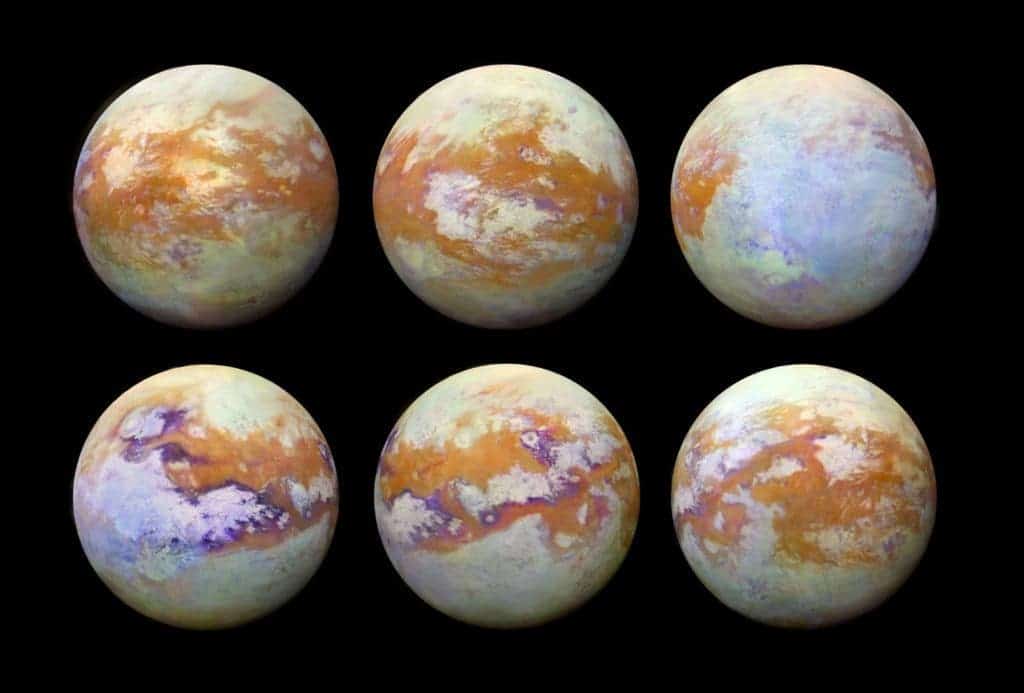NASA is spoiling us once again — this time with some stunning photos of Titan.

The six images above represent some of the clearest and sharpest images we have ever captured of the icy moon. They were taken by the Visual and Infrared Mapping Spectrometer (VIMS) instrument on board NASA’s Cassini spacecraft, whose mission to explore Saturn and its moons ended on September 15, 2017. Although Cassini’s mission ended, scientists are still analyzing data and images the shuttle sent our way.
The new images are the result of a multitude of different observations made under a wide variety of lighting and viewing conditions. Making mosaics from VIMS images of Titan is particularly challenging because the viewing angle and atmospheric conditions varied so greatly. As a result, most images had visible seams which overlapped on the image, but that was removed here through painstaking data analysis and hand processing.
With the seams now gone, this is quite possibly the best collection of Titan photos available, and the images can be used to study Titan’s features in unprecedented detail. NASA has also released a bigger, black & white map of Titan with labeled features — you can check that out here.

From these images, it becomes apparent that Titan’s surface is anything but uniform. Even an untrained eye can quickly distinguish myriad different geological features, although what those features are remains a much more difficult question. For example, you can notice some equatorial dune fields, which appear a consistent brown color here. The bluish and purplish areas have a clearly different composition and possibly contain water ice.
It’s important to note that the image is not in the visual spectrum — observing the surface of Titan in the visible region of the spectrum is difficult, due to the globe enshrouding haze that envelops the moon. The aerosols in Titan’s atmosphere strongly scatter visible light, but leave a few infrared “windows” open — parts of the infrared spectrum where scattering and absorption are much weaker. This is where VIMS excels, and that’s how it was able to snap the good photos NASA worked on to develop the mosaic.
Titan is the largest moon of Saturn. It is the only moon known to have a dense atmosphere and the only object other than Earth where clear evidence of surface liquid has been found. Titan is primarily composed of water ice and rocky material, but, unlike Earth, which is largely covered by bodies of water, Titan features hydrocarbon lakes and seas. Titan’s methane cycle is analogous to Earth’s water cycle but at a much lower temperature (−179.2 °C; −290.5 °F).



